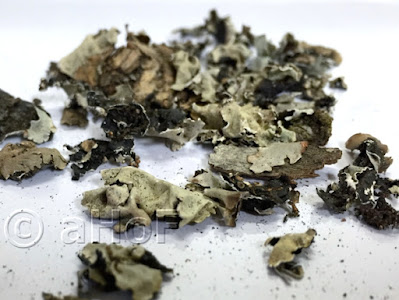Caveat on this blog. Most people will never make either this spice mixture or this dish (probably in a blog tomorrow), just because of the unusual ingredients called for. Still, I find all these new ingredients fascinating, though I might exist in a small minority.
I have been watching an Indian TV series through Netflix which delves into the foods of different areas in India, how they came to be, why they are as they are and the history behind them. There are no recipes, but sometimes the name of a dish is given. I have a lot of foods to look up, eventually. I have been watching this show every few days, so it is keeping me very attuned to Indian food and culture. Not like I need more inspiration. I love Indian food!
So somewhere along the way, I found a mention of a dish called either Punjabi Chole or Pindi Chole. The word "Chole," or alternatively "Channa" means garbanzo beans. Punjab is the area this dish is from. Once I find something new, I research as much as possible, looking at many different takes on a given recipe, seeing what people do differently, and how it is Americanized in many instances.
 |
| Dagad Phool or Stone Flower Lichen |
The garbanzo beans, apparently, are cooked with some dried lichen called Stone Flower Lichen or "Dagad Phool," and also with dried Indian Gooseberries called "Amla." These two things give a particular flavor and also darken the beans as they cook, giving the traditional deep dark color of this dish. The Americanized version calls for tea bags to be cooked with the garbanzos, to give the darker color that would result from the lichen and gooseberries. Also, a certain tannic quality. But teabags are just too easy! I wanted more authentic.
 |
| Postage Stamps from India |
In preparation for the Punjabi Chole dish, first I had to make the Chole Masala powder, so here is that recipe, with the actual Punjabi Chole dish in my next blog:
Chole Masala Powder
Makes 10 tablespoons (enough for 5 recipes of the Punjabi Chole)
3 tablespoons coriander seeds
1 tablespoon cumin seeds
2 teaspoons dried pomegranate arils, optional
2 teaspoons green cardamom seeds
1 teaspoon black peppercorns
1 teaspoon fennel seeds
½ teaspoon whole cloves
½ teaspoon black cardamom seeds
3-inches of true cinnamon
1 or 2 Indian bay leaf (tej patta), crumbled
¼ teaspoon Carom / Ajwain seeds
1 star anise, broken
----------
1¼ teaspoons dried fenugreek leaves (kasoori methi)
----------
1 teaspoon dried mango powder (amchur)
1 teaspoon turmeric
1 teaspoon powdered dried red chili
1½ teaspoon ground ginger
1 teaspoon black salt, if available
Combine the first 12 whole spices in a dry skillet and set over medium high heat. Toss the seeds and spices continuously until they become lightly browned. Pour them out onto a plate to cool.
 |
| Making Chole Masala Powder: spices in skillet left; finished powder right. |
Place the dried fenugreek leaves into a spice grinder and set aside. Once the toasted spices have cooled, add them to the spice grinder and grind to a fine powder.
In a small bowl mix together the final 5 spices and add to them the mixture from the spice grinder. Mix well and store in a glass jar with tight fitting lid in a cool, dark place.
My passion is teaching people how to create a harmony of flavors with their cooking, and passing along my love and joy of food, both simple or exotic, plain or fancy. I continue my journey in ethnic and domestic cuisines, continuing my journey to explore diverse culinary experiences and hopefully to start you on a journey of your own. Join me also at A Harmony of Flavors on Facebook, and Pinterest.
In a small bowl mix together the final 5 spices and add to them the mixture from the spice grinder. Mix well and store in a glass jar with tight fitting lid in a cool, dark place.
My passion is teaching people how to create a harmony of flavors with their cooking, and passing along my love and joy of food, both simple or exotic, plain or fancy. I continue my journey in ethnic and domestic cuisines, continuing my journey to explore diverse culinary experiences and hopefully to start you on a journey of your own. Join me also at A Harmony of Flavors on Facebook, and Pinterest.

No comments:
Post a Comment